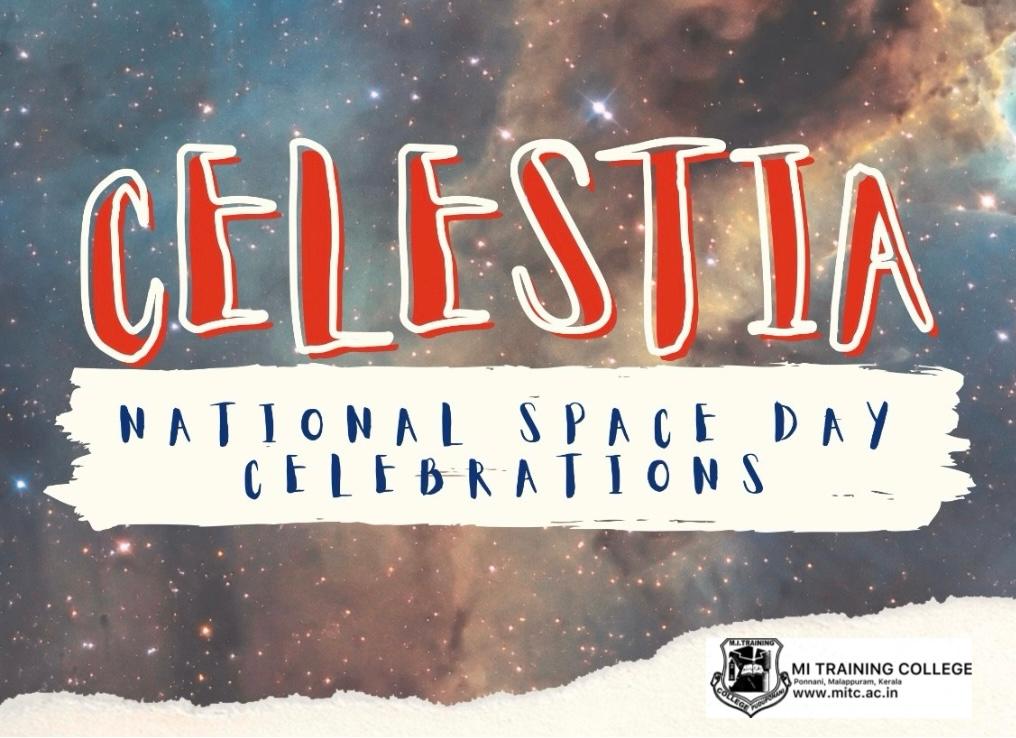
On National Space Day, the Science Club of M.I. Training College, Ponnani, orchestrated an extraordinary space-themed exhibition titled “CELESTIA,” which emerged as a resounding success, capturing the imaginations of both students and faculty alike. This dynamic event was meticulously designed to spark curiosity and foster a deeper understanding of the universe, marking a significant milestone for the college’s science outreach initiatives.
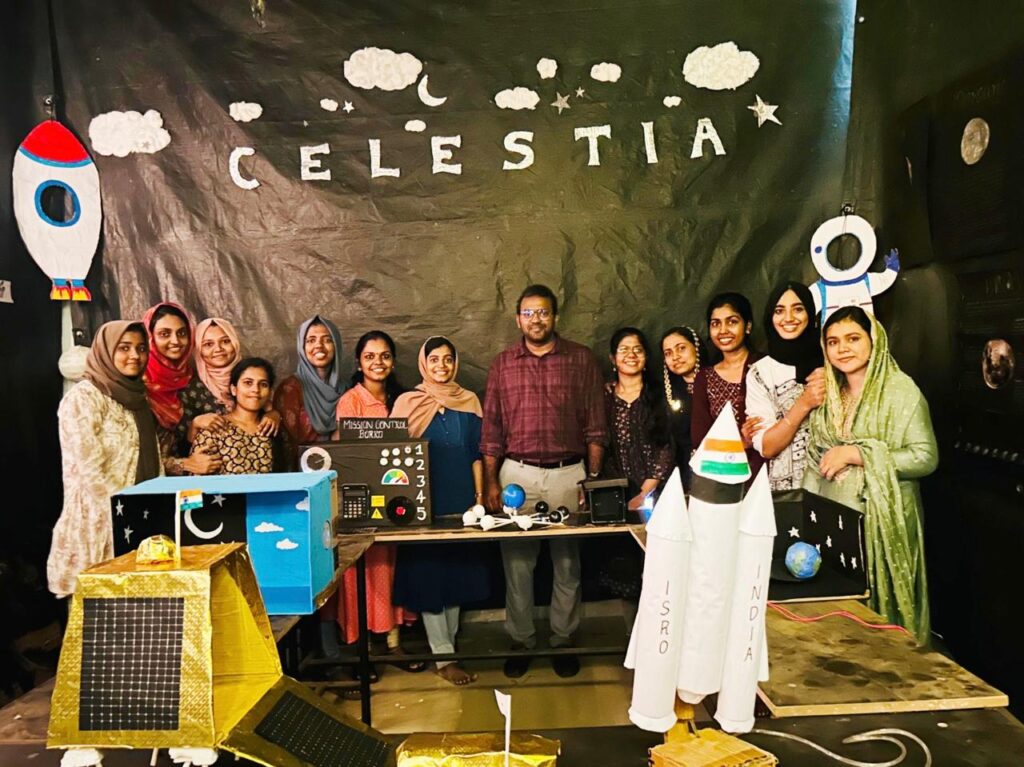
The festivities commenced with an engaging quiz competition that set the tone for the day. This was followed by an enlightening discussion on the significance of Space Day, emphasizing the importance of space exploration and scientific discovery. The event was formally inaugurated by Mr. Ameen Farook UK, Principal in Charge and English Faculty member at M.I. Training College, whose presence added a touch of distinction to the occasion.
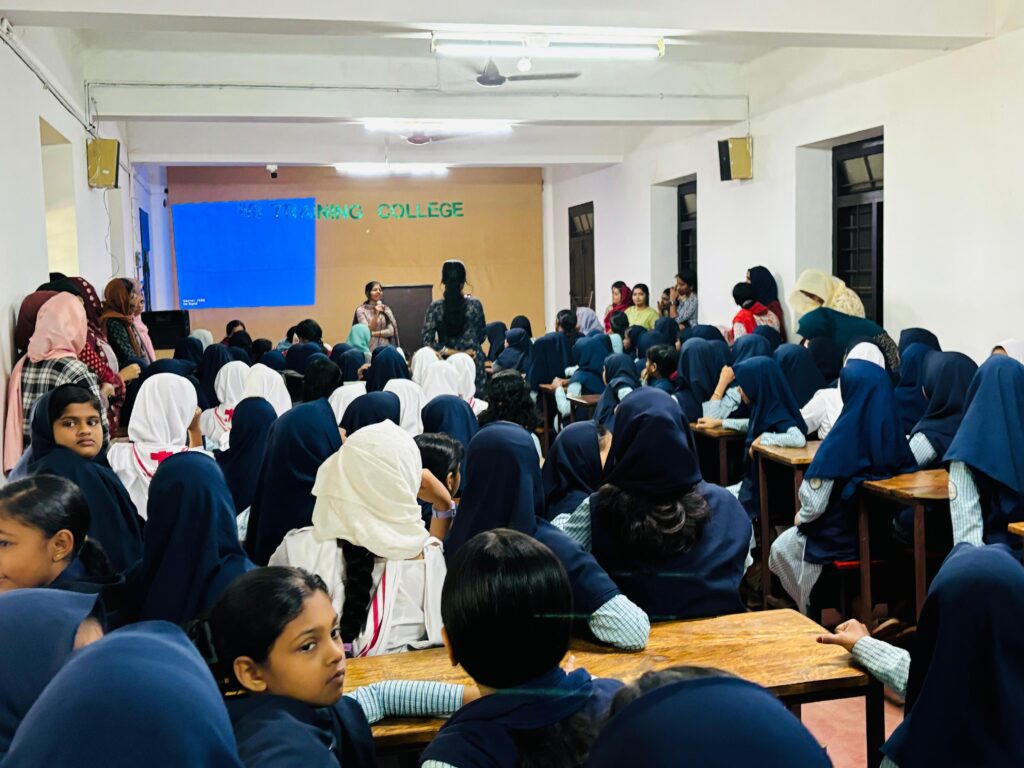
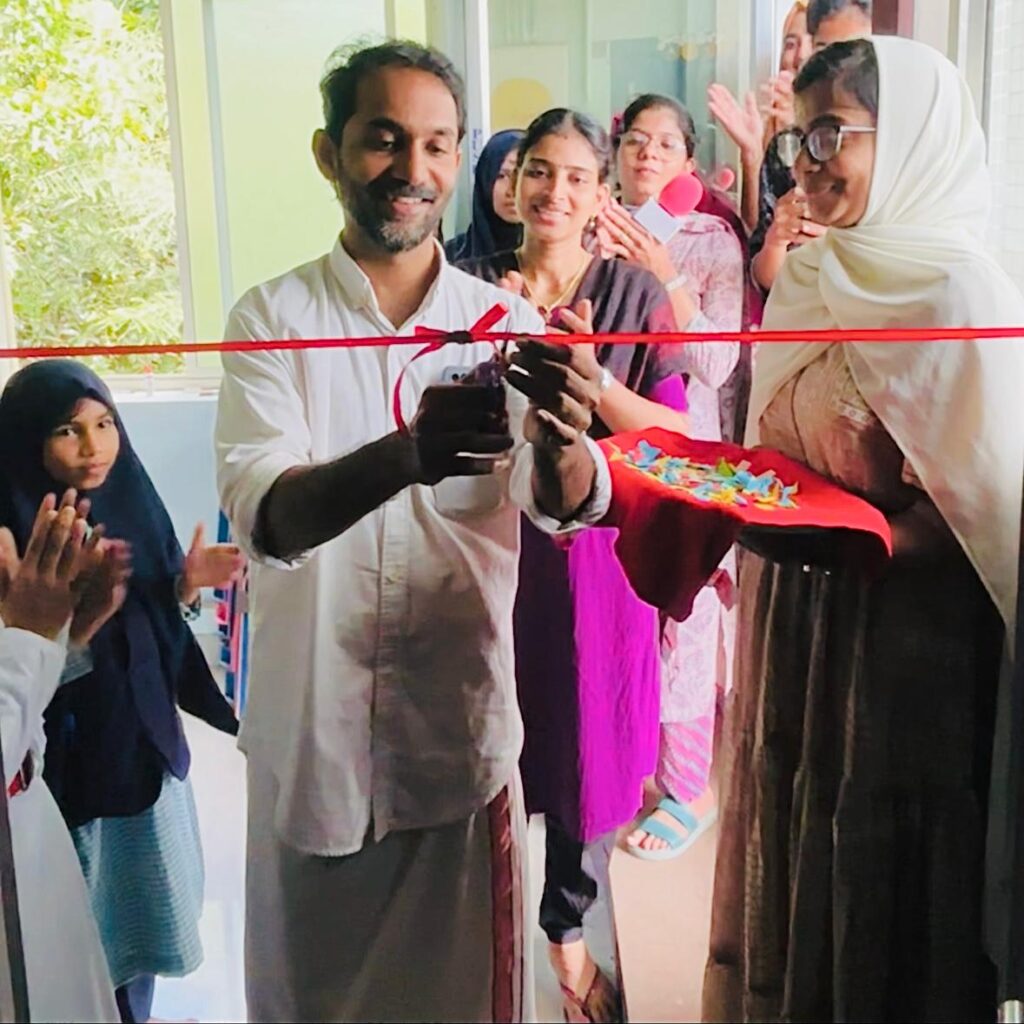
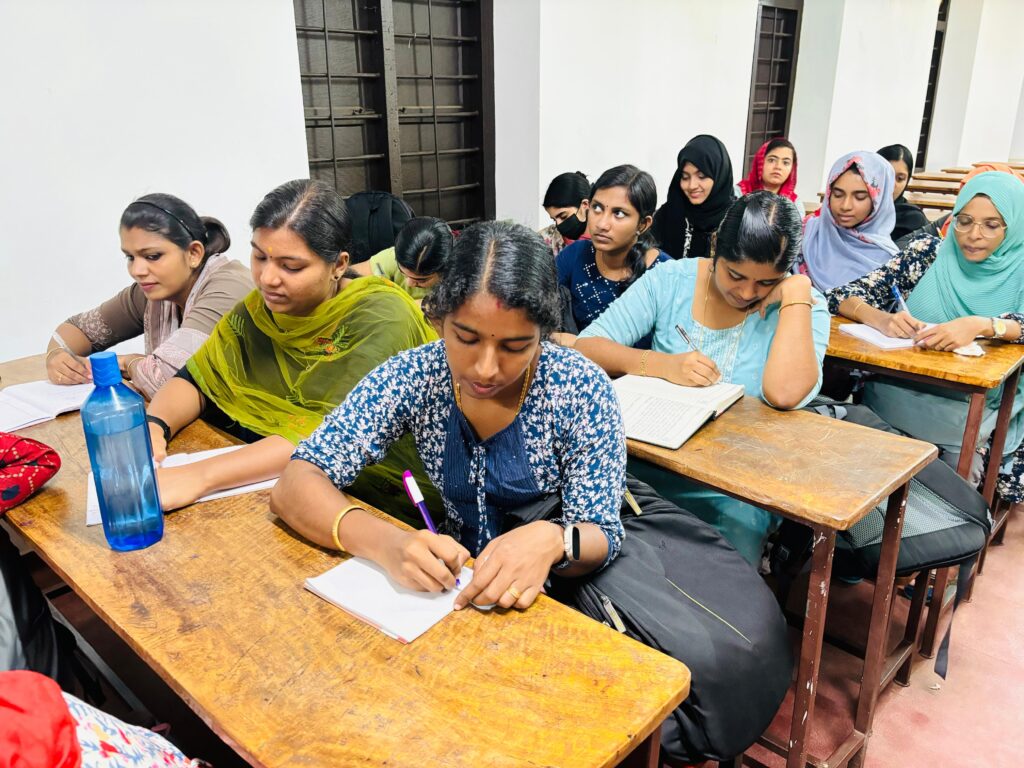
The centerpiece of “CELESTIA” was a breathtaking 3D dark room setup that convincingly simulated the vastness and mystery of outer space. Visitors were treated to a series of captivating exhibits, each showcasing different facets of space science:

Solar System Model: A meticulously crafted, detailed model provided a comprehensive view of our solar system, offering insights into the arrangement and scale of celestial bodies.
Chandrayaan Hydraulic Model: This innovative exhibit demonstrated the workings of India’s lunar exploration mission, Chandrayaan, with hydraulic mechanics that brought the mission to life.
Lander and Rover Models: Interactive models of landers and rovers illustrated their role in planetary exploration, sparking discussions about their contributions to space science.
Solar and Lunar Eclipse Models: Working models effectively demonstrated the phenomena of solar and lunar eclipses, providing a visual and educational experience.
Phases of the Moon Model: A dynamic model explained the phases of the moon, enhancing understanding of this lunar cycle.
Day and Night Experiment: This hands-on experiment illustrated the Earth’s rotation and its effects on day and night cycles.
Space Mission Control System: A simulated control room allowed visitors to experience the complexities of space mission operations.
Hologram Setup: The use of holography offered a futuristic touch, showcasing various celestial phenomena in an immersive format.
The exhibition attracted a large number of students, including those from M.I.H.S.S. for Girls, Ponnani, who joined in to revel in the visual and educational feast. The event not only met but exceeded expectations, achieving its goal of inspiring awe and curiosity about space.
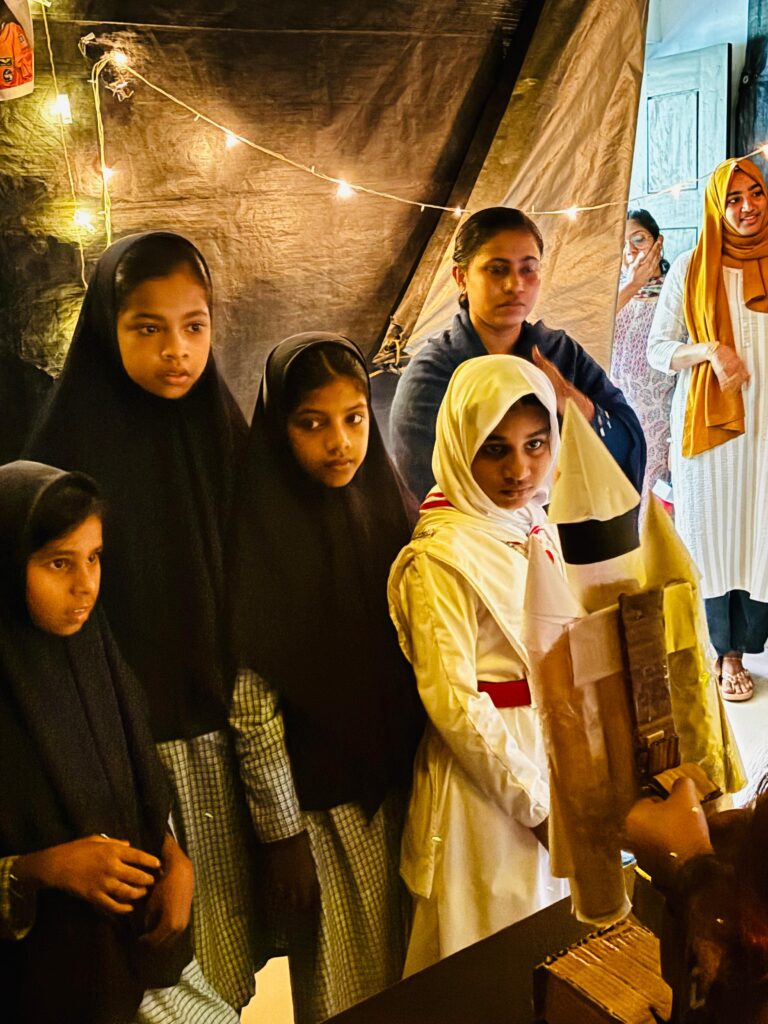
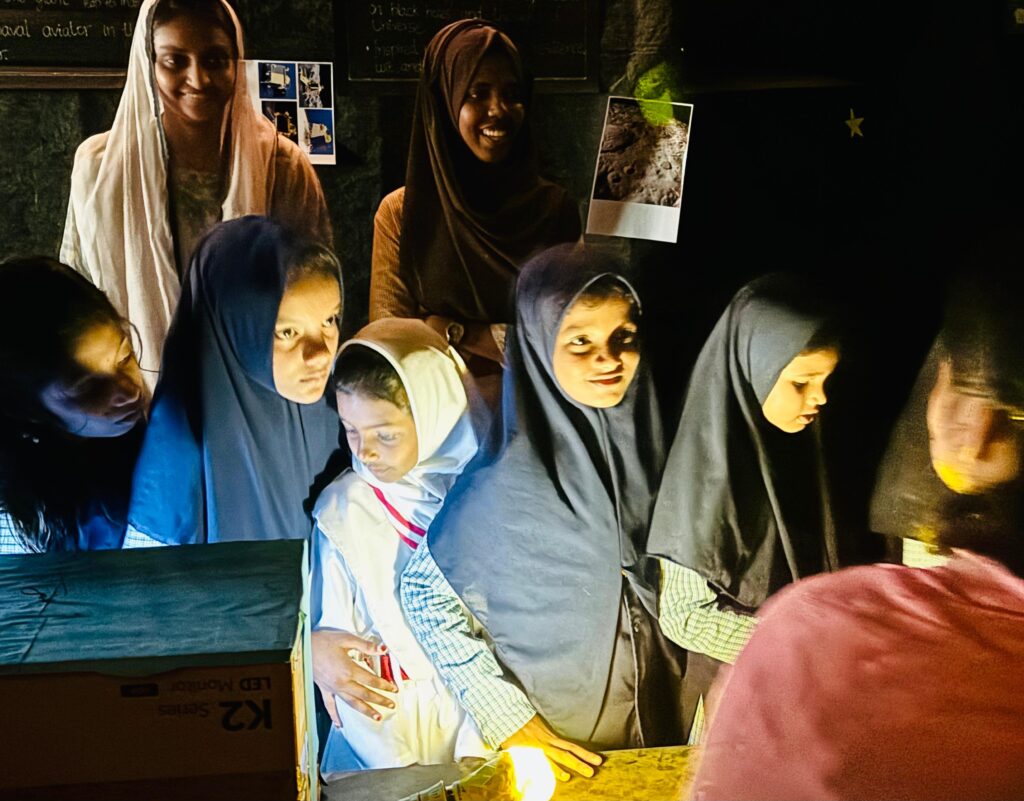
The success of “CELESTIA” was a testament to the dedication and creativity of the Science Club members. Their tireless efforts culminated in an exhibition that received widespread acclaim and positive feedback. The event not only highlighted the students’ hard work but also reinforced the significance of space exploration and science education.
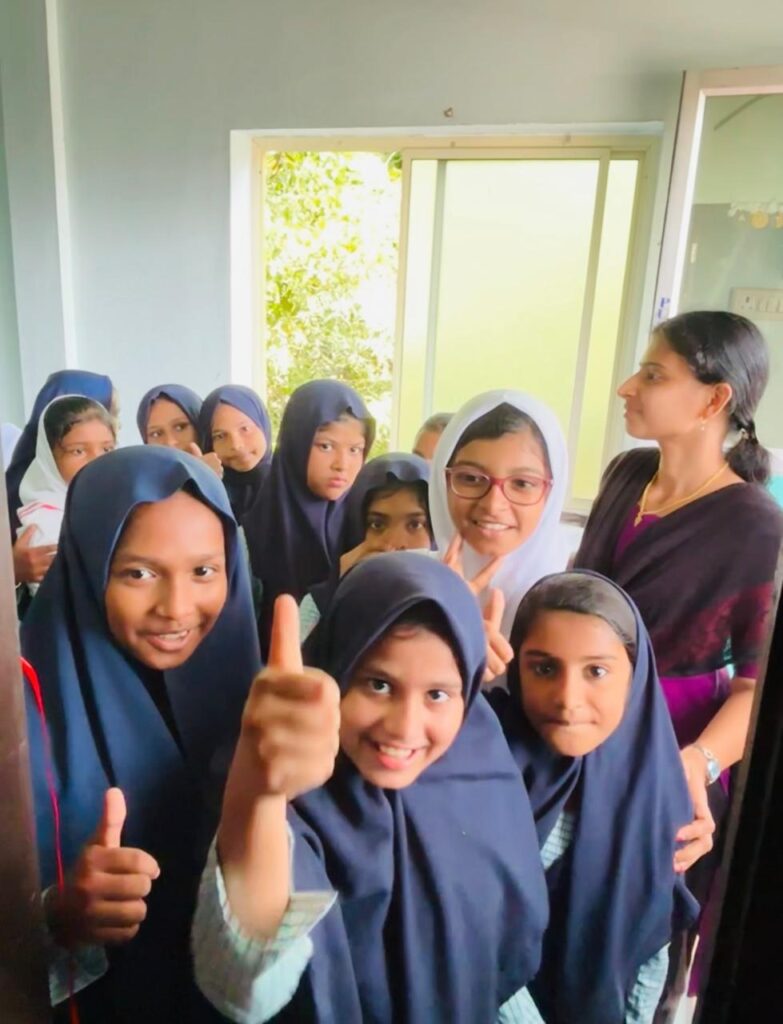

In conclusion, “CELESTIA” stands as a shining example of how educational events can engage and inspire. The Science Club’s initiative has set a high standard for future events and demonstrated the power of creativity in education.
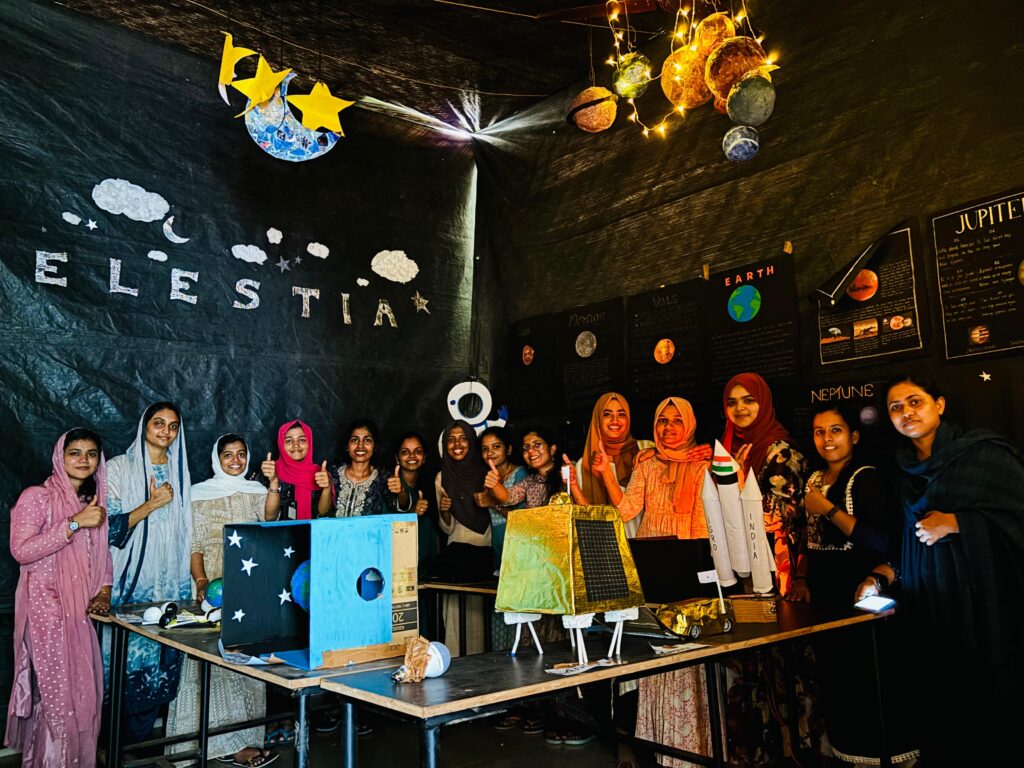
![]()